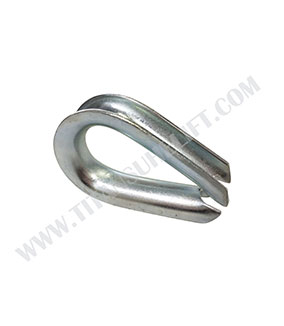What Does "Shortlinked" Mean?
The term "shortlinked" refers to the configuration of the chain links. In shortlinked chains, the distance between two adjacent links is smaller compared to standard chains. This tighter linkage not only improves the strength and durability of the chain but also provides greater flexibility. As a result, shortlinked chains are more adaptable to various lifting configurations and can support heavier loads more securely than their longlinked counterparts.
How Shortlinked Lifting Chains Are Different
Shortlinked lifting chains distinguish themselves from other types of chains through their unique design and enhanced performance characteristics. The primary difference lies in the length of the links; shortlinked chains feature shorter, more compact links compared to standard chains. This design results in a higher number of links per meter, which significantly boosts the chain’s overall strength and load-bearing capacity. The compact nature of the links also enhances the chain’s flexibility, making it easier to maneuver in tight or confined spaces. Additionally, shortlinked chains are less prone to kinking and tangling, which not only improves their durability but also enhances safety during lifting operations. These attributes make shortlinked lifting chains particularly well-suited for heavy lifting tasks, where reliability and performance are paramount.
Advantages of Shortlinked Chains in Heavy Lifting
Enhanced Strength
One of the most significant advantages of shortlinked chains is their superior strength. The shorter links distribute weight more evenly, allowing the chain to handle heavier loads without stretching or breaking.
Improved Flexibility
Shortlinked chains offer greater flexibility, which is especially useful when working in confined spaces or around irregularly shaped objects. Their compact design makes them easier to maneuver and less prone to tangling.
Durability and Longevity
Due to the reduced stress on individual links, shortlinked chains tend to last longer than their longer-linked counterparts. The closer proximity of the links also minimizes wear and tear, extending the overall lifespan of the chain.
Safety Benefits
Safety is paramount when it comes to heavy lifting. Shortlinked chains provide an extra level of security due to their higher load capacity and reduced risk of failure under pressure. This makes them a safer option in industries where mishaps can lead to serious consequences.
Types of Shortlinked Lifting Chains
There are several grades of shortlinked lifting chains, each designed for specific applications and load capacities.
Grade 80 Shortlinked Chains
Grade 80 chains are known for their high strength and durability. They are commonly used for lifting heavy machinery, vehicles, and construction materials. These chains meet rigorous safety standards and are often used in critical lifting operations.
Grade 100 Shortlinked Chains
Grade 100 chains offer even greater strength than Grade 80, making them suitable for extremely heavy loads. These chains are often used in the shipping and transportation industries for moving large containers and other heavy cargo.
Grade 120 Shortlinked Chains
Grade 120 chains are the strongest of all and are used in highly demanding environments. These chains provide exceptional durability and are ideal for industrial settings where maximum strength and resistance to wear are critical.
Choosing the Right Shortlinked Lifting Chain
Choosing the right shortlinked lifting chain is crucial for ensuring both the efficiency and safety of your lifting operations. The selection process involves several key considerations, starting with the load capacity, which must match or exceed the maximum weight you intend to lift. The working environment also plays a significant role; for instance, stainless steel chains are ideal for corrosive or marine settings, while alloy steel chains are better suited for heavy-duty industrial applications. Additionally, the specific requirements of your lifting tasks will dictate whether you need a Grade 80 chain for general heavy lifting or a Grade 100 chain for more demanding loads. Safety standards and certifications should never be overlooked, as they guarantee the chain’s reliability and compliance with industry regulations. Finally, the length and size of the chain must be appropriate for your particular needs, ensuring optimal performance and maneuverability. By carefully evaluating these factors, you can select a shortlinked lifting chain that offers the perfect balance of strength, durability, and safety for your specific application.







































